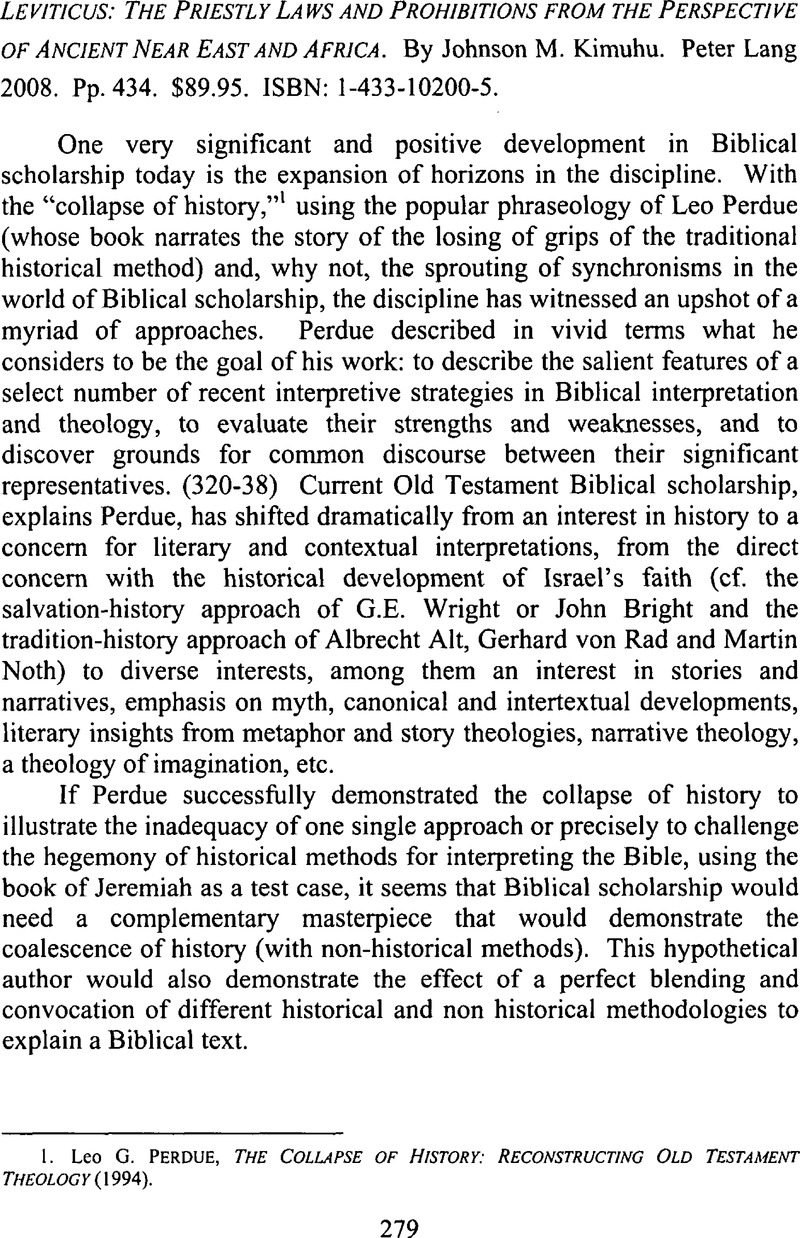No CrossRef data available.
Published online by Cambridge University Press: 25 September 2015

1. Perdue, Leo G., The Collapse of History: Reconstructing old Testament Theology (1994)Google Scholar.
2. Malul, Meir, The Comparative Method in Ancient Near Eastern and Biblical Legal Studies (Alter Orient Altes Testament: Bd. 227, 1990)Google Scholar.
3. The Igbos are one of the three major ethnic-linguistic groups in Nigeria. These are the Igbos, the Hausas and the Yorubas. They are located in the Southeastern part of Nigeria. Geographically, they are located between latitude 5 to 7 degrees north and longitude 6 to 8 degrees east, occupying an area of about twenty thousand square kilometers. Today in present Nigeria, the Igbos occupy the States of Imo, Anambra, Abia, Enugu and Ebonyi, while yet a significant number are included in the Rivers and Delta States. Its population density is estimated to be around 750 to 1000 in a square kilometer, while they number totally about 40 million in a Nigeria of about 150 million inhabitants. Cf. Igbo People, http://en.wikipedia.org/wiki/Igbopeople (last visited Jan. 26, 2010) and sources cited therein.
4. Walter Brueggemann, Editor's Forward to Perdue, Leo G., The Collapse of History ix (Brueggemann, Walter, Donahue, John, Dowd, Sharyn, Seitz, Christopher eds., Fortress Press 1994)Google Scholar.
5. Mckenzie, Steven L. & Haynes, Stephen R., To Each its Own Meaning: An Introduction to Biblical Criticisms and Their Application (Westminster/John Knox Press 1993)Google Scholar.
6. Lebrun, Jean-Pierre & Wenin, Andre, Des Lois Pour Etre Humain (Humus Entretiens) 10 (Èd. Èrès 2008) (French) (author's translation)CrossRefGoogle Scholar.
7. Id.
8. Romero, C. Gilbert, A Hermeneutic of Appropriation: A Case Study of Method in the Prophet and Latin American Liberation Theology (Princeton Theological Seminary 1982)Google Scholar.
9. Simon, Uriel, Reading Prophetic Narratives xvii (Shramm, Lenn J. trans., Ind. Univ. Press 1997)Google Scholar.
10. Cf. Acts 2:8. The French Jerusalem Bible puts it very beautifully: “que chacun de nous les entende dans son propre idiome maternel.”
11. Sterk, J.P., Translation as Re-Creation, 45 Technical Papers 109 (1990)Google Scholar.